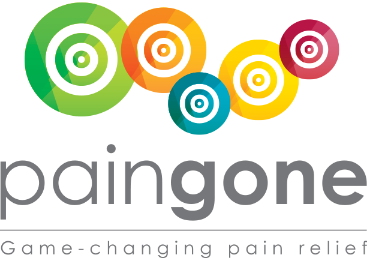
Oct 28, 2021
Paingone
Debate Rages Over Hulu Series “Dopesick”
The original Hulu miniseries “Dopesick” is being hailed as a long-overdue look at the opioid crisis and how the greed of giant pharmaceutical companies drove it. There has been some pushback, however, from physicians who decry the one-sided depiction of the problem. The series depicts the opioid addiction crisis as primarily a result of evil doctors, backed by pharmaceutical companies, overprescribing opioids to patients, turning them into addicts.
In response, legislators sprang into action. Since 2012, prescriptions of opioids have dropped nearly 50%, yet the overdose rate climbed from 40,000 in 2012 to over 92,000 in 2020. This discrepancy is causing alarm bells for doctors who routinely work with patients suffering from chronic pain.
In a recent opinion piece in the online magazine Reason, writer Jeffrey A. Singer summarized the problem, “Part of the problem with the false narrative is the tendency of many to equate physical dependence and tolerance (the two are closely related) with addiction. Many drugs, when taken long term, cause physiologic adaptation such that increased doses may be required to reach the desired result, and abrupt withdrawal can cause serious, even life-threatening, withdrawal reactions.”
“Beta-blockers, used to treat high blood pressure among other conditions, are a perfect example. Abrupt withdrawal can be fatal. Yet no serious person would stigmatize people with hypertension controlled by taking beta-blockers daily for years as “beta-blocker addicts.” Many other drugs, including antidepressants and antiepileptics, also cause dependency and tolerance. Addiction, on the other hand, is defined as compulsive use despite adverse consequences. Addiction is a compulsive behavioral disorder, usually associated with psychological traumas during early development and preexisting psychoneurological comorbidities.”
Physicians treating chronic pain patients have increasingly had their hands tied due to increasingly stringent FDA opioid guidelines. While this helps limit potential overdosing for patients with acute pain and those with the potential for addiction, there is a negative impact for those suffering from chronic pain who may be dependent on prescription opioids for relief of their agony but who shouldn’t be considered addicts. Time will tell whether the narrative that “Dopesick” is selling will have a net positive or negative result for those suffering from debilitating, long-term pain.
Molecular Signal That Transforms Acute Pain to Chronic Pain Identified
A study at the University of California has discovered that a specific, intracellular enzyme (NAAA) is responsible for the transition of acute pain to chronic pain. When this enzyme, found in the spinal cord, was disabled in laboratory mice in the first 72 hours following the onset of acute pain, chronic pain failed to develop. The results were published in a recent issue of Science Advances.
According to Daniele Piomelli, Distinguished Professor at the University of California, Irvine’s UCI School of Medicine Department of Anatomy & Neurobiology, “This study is the first to identify that NAAA, a previously unrecognized control node, can be effectively targeted by small-molecule therapeutics that inhibit this enzyme, and block the transition from acute to chronic pain. Our findings suggest a new class of drugs—NAAA inhibitors—can be used to treat various forms of chronic pain and in preventing incisional and inflammatory injuries following surgery.”

Cancer Drug Reprograms Pain Pathways
The severe, debilitating pain of chronic bone pain and nerve injury associated with certain kinds of metastatic cancer is incredibly difficult to treat. The long-term suffering affects not only patients but their loved ones as well. Current treatments may reduce pain but at the cost of side effects, including sedation, brain fog, constipation, itching, and other unpleasant reactions. The search for an alternative has been, until recently, frustrating. Research by Dr. Wolfgang Liedtke has focused on finding better options for over 17 years. The focus has been on ways to address the genetic factors contributing to chronic pain.
“Because chronic pain, like many chronic diseases, has an important root in genetic switches being reprogrammed in a bad way, a disease-modifying treatment for chronic pain should reset the genetic switches, not just cover up the pain, as with opioid and aspirin/Tylenol-like painkillers,” explains Dr. Liedtke, an executive at Regeneron Pharmaceuticals. Liedtke practiced pain medicine for the last 17 years at Duke University Medical Center.
During his tenure at Duke, Dr. Liedtke and his research team worked closely with researchers at the University of California, Irvine reviewed and tested over a thousand different cancer drugs to see how they affected pain. They eventually discovered 137 that involved a specific gene, KCC2, which regulates nerve pain transmission. The most promising compound, Kenpaullone, reduced or eliminated pain by blocking nerve constriction or cancer cells in the femurs of test animals. Relief was long-lasting and profound.
“At this stage, we knew we had met the basic requirement of our screen of shelved cancer drugs, namely identified Kcc2 gene expression-enhancers, and demonstrated that they are analgesics in valid preclinical pain models,” noted Liedtke.
Research continues as the team explores additional chronic pain conditions that could respond to Kenpaullone.
This Week’s Pain Fact: Chronic pain begins as acute pain for most people, often resulting from injury or surgery. The problem of chronic pain is complex, as it exists long after the healing of the original injury or surgery. It is resistant to therapy and is often undertreated, as the effectiveness of most treatments wanes over time. Currently, over 1.5 billion people around the globe suffer from severe, chronic pain.
Is Paingone helping your patients and your practice?
Tell us your success story.
A robust retail strategy is essential to growing your practice.
You only have so many hours a week available for appointments. The fastest way to increase your bottom line is to incorporate profitable products that generate repeat business and build your reputation as a medical professional. That’s where Paingone comes in.
Contact us below to learn more about our products, wholesale pricing and how Paingone can benefit your practice.

